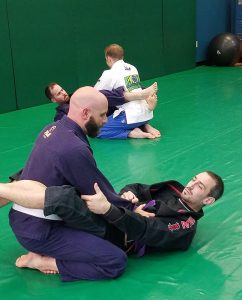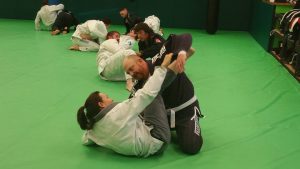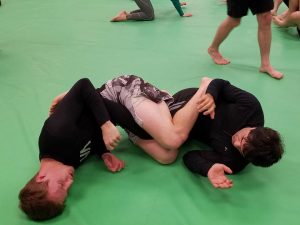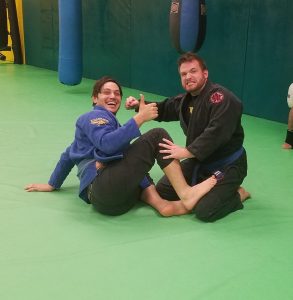Daniel Frank is a first degree black belt in BJJ. He teaches numerous classes throughout the week at Revolution BJJ.
 Drilling has become a staple practice in most, if not all, sports. By practicing the same technique, repeatedly, that technique becomes ingrained in the athlete’s muscle memory. Once that opportunity presents itself in practice, or in competition, the athlete can perform the technique instinctively and without hesitation.
Drilling has become a staple practice in most, if not all, sports. By practicing the same technique, repeatedly, that technique becomes ingrained in the athlete’s muscle memory. Once that opportunity presents itself in practice, or in competition, the athlete can perform the technique instinctively and without hesitation.
Jiu jitsu is not just a martial art, but a sport as much as baseball, hockey, or jai alai is. Jiu jitsu practitioners have taken to adding drilling to their preparation and have found that their hard work is rewarded with good results in the academy and in competition. In order to use drilling effectively in one’s training, the art of drilling needs to be addressed. There are a few simple ways to optimize your drilling time, and also some pitfalls to avoid.
- Start out Simple
There are basic moves in jiu jitsu and there are complicated moves. There are simple movements and there are complex movements. If you cannot perform the simple movement or a fundamental move, then why would you attempt to do one of the most complicated? Both inexperienced and experienced grapplers can optimize their drilling by perfecting the simple maneuvers first. Many times it doesn’t have to be the whole technique. The practitioner can begin by performing the most difficult portion of the technique, or the most physically taxing, repeatedly in order to get accustomed to it. Once that task is completed the practitioner can then drill the whole technique and find that the task is a lot easier. For example, if a student wants to drill a kimura from the closed guard, but has a difficult time sitting up then that movement needs to be drilled repeatedly until the whole technique can be drilled in its entirety.
 Follow the Speed Limit
Follow the Speed Limit
Have you ever had a drilling partner who moved so quickly through a technique that they confused themselves with its execution and were never able to perform the technique correctly? This happens more often than not. When first drilling a technique the speed limit should be ‘grandpa on a Sunday drive’. Go slow and cover all the details. Do not gloss over any details because in the end you want to be an expert in this move, and in jiu jitsu in general. Once you can perform the technique expertly at a slow speed then you can proceed to ‘step on the gas’ and move a bit faster through each repetition. If you build up to a speed where you find yourself making mistakes, then ease off the pedal and move back to a comfortable speed where you can execute the technique correctly.
 Stay on Task
Stay on Task
Nothing will sabotage your progress in drilling quite like skipping around from one technique to another, especially during one four or five minute session. If you are drilling a sweep from the half guard, then you should spend every minute you have drilling the sweep from the half guard. If you have multiple turns, then it is a good opportunity to practice the same technique multiple times. If there are a couple of drilling classes available during the week, then why not stick with that technique all week long. Jiu jitsu is a marathon, not a sprint. There is no need to be in a rush to drill every single technique.
- Be a Friend
Being a good training partner while drilling is vital to both of the parties involved. Communicate with your partner and let them know what you are working on. Discuss the level of resistance that you require. Also, tell your partner when you would like them to increase or lessen resistance. Your partner is not a mind reader. If you are the ‘cooperating’ partner in the drill, then make sure that you are cooperating. Do not show your partner all of the things that you would do at the end of the technique or bring up the ‘what if’ situations. Give your partner constructive criticism and let them drill their technique.
 Drilling is very important to improving your jiu jitsu game. If it is not a part of your training routine now then think about incorporating it into your schedule soon. Remember that it is not ‘practice that makes perfect’, but rather it is ‘perfect practice that makes perfect’.
Drilling is very important to improving your jiu jitsu game. If it is not a part of your training routine now then think about incorporating it into your schedule soon. Remember that it is not ‘practice that makes perfect’, but rather it is ‘perfect practice that makes perfect’.